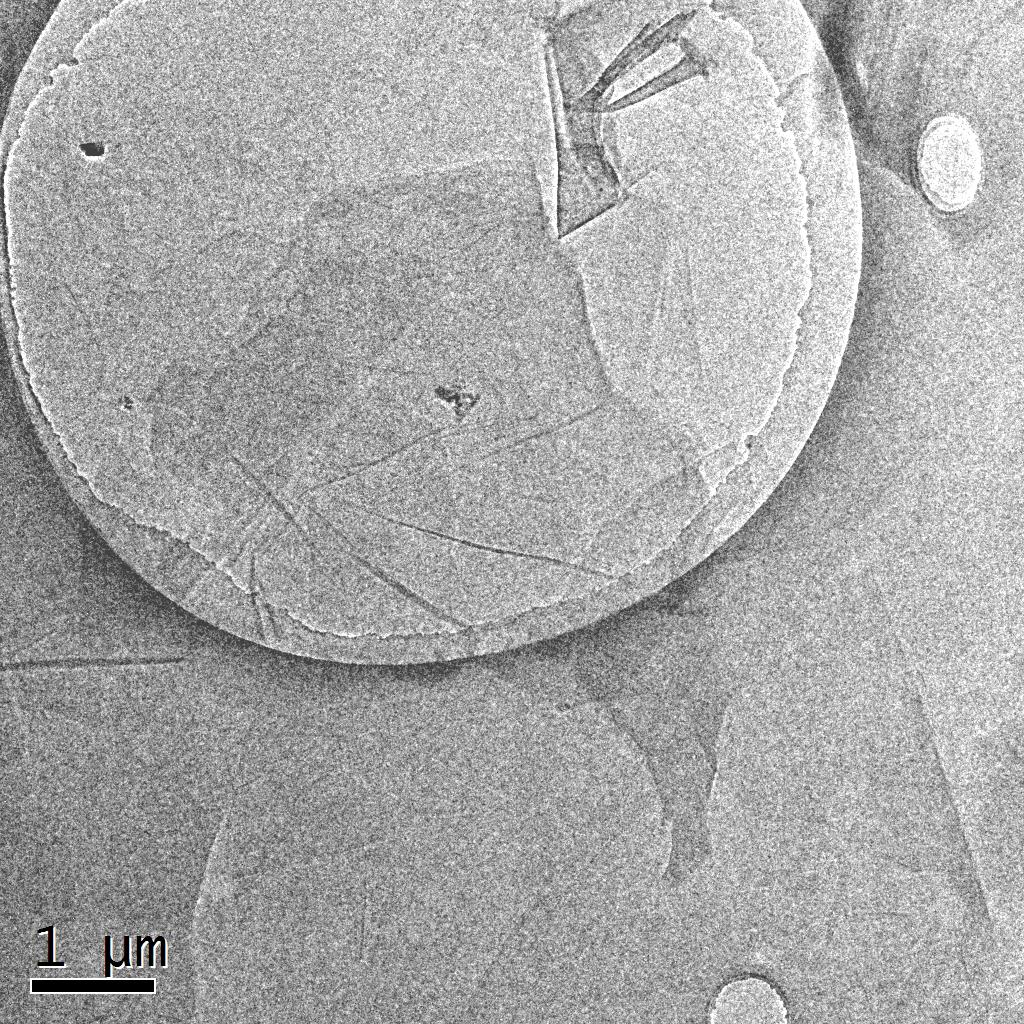Single Layer Graphene Oxide Powder (H Method)
Powder Form
Product Detail
Single-layer graphene oxide powder (H method) can be dispersed easily in a variety of solvents, making it highly popular among those in need of ultrastrong coatings for their equipment. Applications for single-layer graphene oxide powder include chemical and bio sensors, supercapacitors, solar cells, and more. While difficult to produce, recent studies suggest that inexpensive yet effective ways of creating this compound will soon be part of mainstream processes. If you’re in need of a graphene oxide powder that can be tailored to fit your specific needs, look no further than our single-layer graphene oxide powder (H method).
CAS-No: 7782-42-5
1. Preparation Method
Hummer’s Method
2. Characterizations
|
Appearance: |
Brown powder |
|
Purity: |
~ 99% |
|
Lateral size: |
0.5-5 μm |
|
Thickness: |
0.8-1.2 nm |
|
Singer layer Ratio: |
~ 99% |

Product Image of ACS Material Single Layer Graphene Oxide Powder (H Method)

Typical TEM Image (1) of ACS Material Single Layer Graphene Oxide Powder (H Method)

XRD Analysis of ACS Material Single Layer Graphene Oxide Powder (H Method)

IR Pattern of ACS Material Single Layer Graphene Oxide Powder (H Method)

XPS Spectrum of ACS Material Single Layer Graphene Oxide Powder (H Method)
|
Name |
Peak BE |
FWHM eV |
Area(P)CPS.eV |
Atomic % |
|
C1s |
286.87 |
1.41 |
75584.6 |
66.91 |
|
O1s |
532.55 |
1.81 |
98969.68 |
33.09 |
XPS Peak Table of ACS Material Single Layer Graphene Oxide Powder (H Method)
3. Application Fields
Graphene and polymers manufacture, water purification, flexible rechargeable battery electrode, optically transparent films, papers, sensors, nanocarriers for metal catalysis, anti-electrostatic additives, adsorption material and biomedicine etc.
Disclaimer: ACS Material LLC believes that the information on our website is accurate and represents the best and most current information available to us. ACS Material makes no representations or warranties either express or implied, regarding the suitability of the material for any purpose or the accuracy of the information listed here. Accordingly, ACS Material will not be responsible for damages resulting from use of or reliance upon this information.
Research Citations of ACS Material Products
- Dedelaite, Lina, et al. “Surfaces functionalized by graphene oxide nanosheets for single cell investigations.” Sensors and Actuators B: Chemical, vol. 255, 2018, pp. 1735–1743., doi:10.1016/j.snb.2017.08.187.
- Trinidad, Josh, et al. “Solvent presence and its impact on the lap-Shear strength of SDS-Decorated graphene hybrid electrically conductive adhesives.” International Journal of Adhesion and Adhesives, vol. 78, 2017, pp. 102–110., doi:10.1016/j.ijadhadh.2017.06.012.
- Kahyaoglu, Leyla Nesrin, and Jenna L. Rickus. "Robust Covalent Coupling Scheme for the Development of FRET Aptasensor based on Amino-Silane-Modified Graphene Oxide." Langmuir 34, no. 48 (2018): 14586-14596.
- Lazarević-Pašti, Tamara, Vladan Anićijević, Miloš Baljozović, Dragana Vasić Anićijević, Sanjin Gutić, Vesna Vasić, Natalia V. Skorodumova, and Igor A. Pašti. "The impact of the structure of graphene-based materials on the removal of organophosphorus pesticides from water." Environmental Science: Nano (2018).
- Chumakova, Natalia A., Anastasya T. Rebrikova, Alexandr V. Talyzin, Nikita A. Paramonov, Andrey Kh Vorobiev, and Mikhail V. Korobov. "Properties of Graphite Oxide Powders and Membranes as Revealed by Electron Paramagnetic Resonance Spectroscopy." The Journal of Physical Chemistry C 122, no. 39 (2018): 22750-22759.
- Gao, Xianfeng, Fenfen Wang, Sam Gollon, and Chis Yuan. "Micro Silicon-Graphene-CNT anode for full cell lithium ion battery." (2018).
- Berning, T.; Bessarabov, D. GOMEA: A Conceptual Design of a Membrane Electrode Assembly for a Proton Exchange Membrane Electrolyzer. Membranes 2023, 13, 614. https://doi.org/10.3390/membranes13070614
